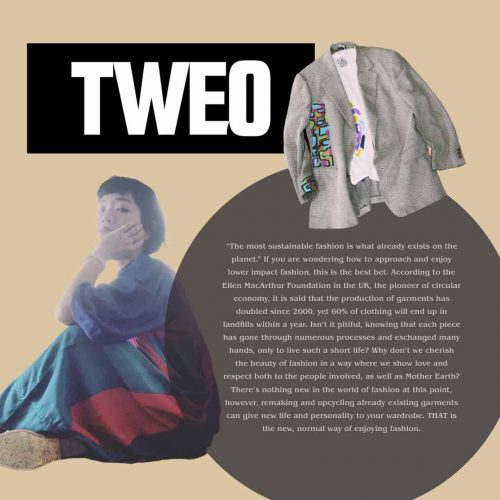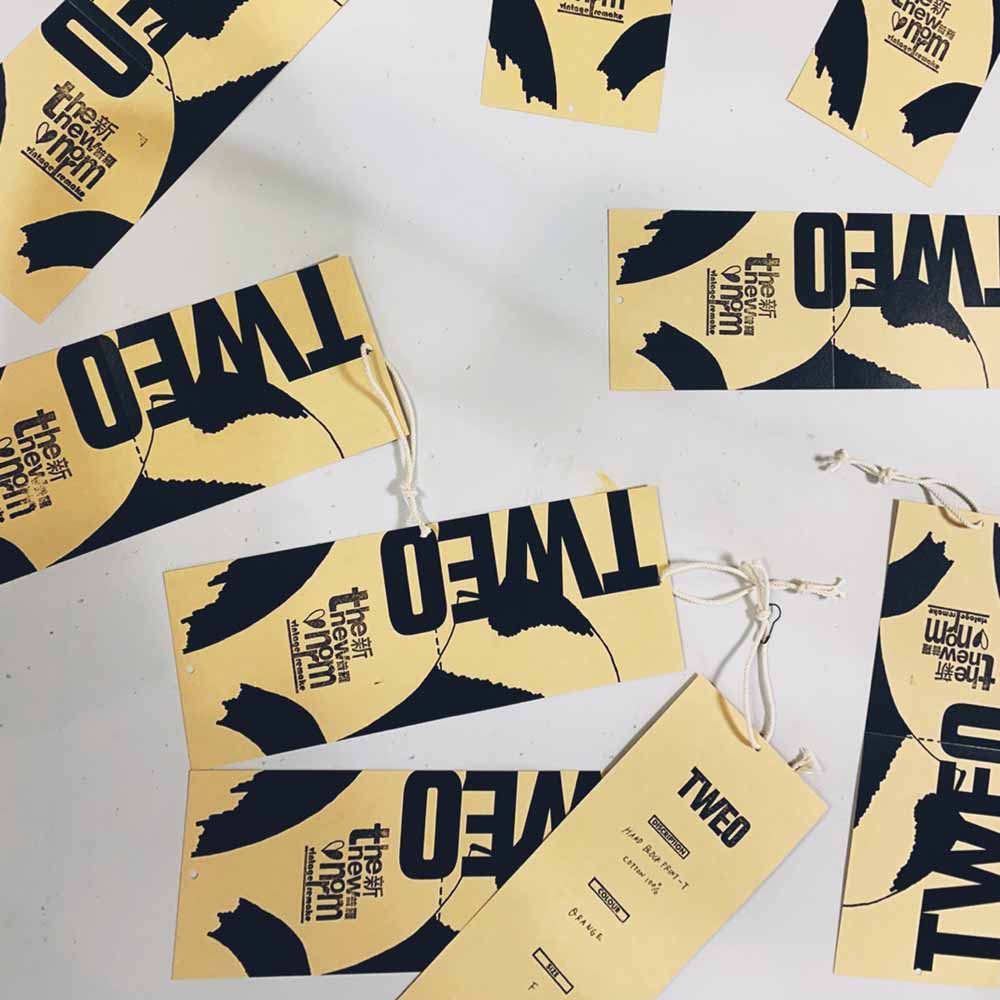この記事は日本語でも読めます。メニューにある Switch to JP ボタンを押してください。
This article is also available in Japanese. Please hit the Switch to JP button in the menu.
A friend of mine, who launched a menswear brand with her fellow creators in 2019, gave me a surprising and flattering offer the other day.
The name of the friend is Tan Yun Szu. She is from Taiwan, and studied fashion design at Bunka Fashion College in Tokyo. We were working at the same company – she as a womenswear designer, and me as a wholesale representative for the North/South American market. We used to see each other in NYC and Paris, and became friends. We both have left the brand, but are still in contact, often chitchatting in both English and Japanese.
“Your Instagram inspires me, and my clothes making has been changing these days.”
“I’m not only designing and producing new clothes, but I’m also starting to remake/retouch/upcycle things that already exist, such as vintage garments.”
“We want to print your words on the product from our new project ‘the new norm’ – do you wanna write an inspirational message in English and Japanese?”
Wow! My words have a chance to time travel to the future, on reclaimed clothes that have already lived in the past? It’s a bit of an exaggeration but that’s how happy and honored I felt.
I tried not to spend too much time coming up with something extra fancy, but followed my instincts as I was rethinking fashion. Here’s how it came out.
“The most sustainable fashion is what already exists on the planet.” If you are wondering how to approach and enjoy lower impact fashion, this is the best bet. According to the Ellen MacArthur Foundation in the UK, the pioneer of circular economy, it is said that the production of garments has doubled since 2000, yet 60% of clothing will end up in landfills within a year. Isn’t it pitiful, knowing that each piece has gone through numerous processes and exchanged many hands, only to live such a short life? Why don’t we cherish the beauty of fashion in a way where we show love and respect both to the people involved, as well as Mother Earth? There’s nothing new in the world of fashion at this point, however, remaking and upcycling already existing garments can give new life and personality to your wardrobe. THAT is the new, normal way of enjoying fashion.
「最もサステナブルなファッションは、すでにこの世に存在しているものを楽しむこと」もし環境負荷が少なく地球に優しいファッションを始めたいなら、おそらくこれを覚えておくといいでしょう。サーキュラーエコノミー第一人者である、英国のエレン・マッカーサー財団によると、2000年に比べ現在のファッション製造は2倍に膨れ上がっている一方で、60%の衣料はたった1年の間で捨てられてるそうです。一つの服を作るのには多くの手を使う工程を繰り返すのにも関わらず・・・。地球と人をもっとリスペクトし、ファッションの真に美しい姿を大切にしませんか?ファッションの世界に、もはや目新しいスタイルは存在しません。しかし、すでにあるものをリメイクしたりアップサイクルすることで、洋服に新しい命や個性を足すことができます。それこそが、私たちにできるファッションを楽しむニューノーマルな形ではないでしょうか。
This message will be introduced to the public on upcycled vintage items by TWEO at a pop-up store in Parco Shibuya from August 4th to 16th. It is called BREATH BY DELTA, whose theme is sustainability and humanity, and ten different brands across the globe are participating.
Fashion mainly consists of clothing, which is meant to protect our bodies from the outside. At the same time, it is a form of self expression for both creators and wearers. I studied fashion marketing at Parsons School of Design, and have worked in the New York fashion industry. I feel passionate about supporting the true beauty and enjoyment of fashion. The dark side of fashion is being discussed a lot lately, especially with regard to the environment and human rights. I wanted to interview Tan on how she sees and faces the sustainable future of fashion, in celebration of the project “the new norm.”
This is a story of fashion, from her perspective as a conscious, creative designer.
Experience with, and Influence from,
Working at a World-Renowned Designer Brand
When we talk about the issues of the fashion industry, oftentimes we tend to single out fast fashion for criticism. However, so-called luxury/designer fashion businesses also have issues when it comes to sustainability. With that being said, Tan shared her experiences at a globally-successful designer brand, explaining that designer brands at least care about the longevity of their items in terms of “how long the item can last” and “how long the item can be loved.”
For instance, the brand she designed for put much love and respect into its textiles, and therefore they were making fabric from scratch. She knew that every single aspect of the weaves was beautiful, how much the whole roll cost, and also who made the fabric.
“Cherishing the fabric made me not want to waste even a tiny bit of it.“
Designers come up with a design, pattern makers create patterns, and they work together to match the fabric to the pattern. Designers then apply their skills to maximize the usage and beauty of the fabric by editing the design.
Tan also learned a traditional Indian method of design and construction at the brand, which shed light on how they handle fabric and produce garments. They cut fabric in a straight line, which is naturally low waste. Moreover, dying, embroidering, and printing are often done by hand, which results in a personal touch for each piece. Her new brand, TWEO, is not directly inspired by India, but the spirit of it definitely passed on to her new project, she says.
There were some difficulties though, she recalls. Especially because all of her creating was happening in a small studio in the office, it was hard for her to hear real feedback from the brand’s customer. Both domestically and internationally, there were a lot of filters (divisions and companies) between the designers and the end users. All comments and suggestions also came back to her through those filters and she was never 100% confident about what she produced.
Sustainability
in the Current Fashion Industry
One of the first “sustainable” things brands do is incorporate eco-friendly materials. Specifically, more and more brands started using recycled materials. However, in reality, the root cause of sustainability issues in the industry are largely systemic and structural. To name a few problems, there is waste from production, overproduction/overstock, and environmental impact/contamination and human rights violation through production and the supply chain. While it is important to select environmentally-friendly materials, those issues just mentioned first need to be reviewed and tackled.
“There is a long way to go in order to improve our business practices, and just like in any industry, we need to rethink the structure and the system of the business.“
These kinds of half-baked solutions, such as revisiting materials, have also been driven by the consumer side over the past couple of years, where they want to enjoy fashion while feeling less guilty.
Especially across global media, Tan sees “slow fashion” getting more attention these days. In fact, a lot of us, who live in the developed world and are financially well-off, have enough clothes already. If we can make a shift in our mindset and realize that we don’t really have to rush to produce or purchase so many clothes, she thinks that the paradigm shift will naturally follow.
Bridging the Past to the Future
as a Fashion Designer
Tan herself was shocked at how much clothing she owned when she looked at her closet one day. Still, she wanted something new. Then she thought, “I know how to make clothes. Why don’t I take a stab at altering what already exists and make something new out of it?” That’s how the idea of “the new norm” project began.
She was originally a fan of vintage, too. Most of the time, you can assume what you’ll find at department stores or specialty stores before even going there. On the contrary, there is always the excitement of treasure hunting when you go to vintage/thrift stores. In addition to that, vintage/secondhand clothes have been worn by other people, so each piece has its own past that gives it a certain Je ne sais quoi. For Tan, it’s questionable and almost heartbreaking to see so many brands these days trying to produce new garments and replicate the vintage look, while harming the environment by doing so.
Vintage + Art
The focus of TWEO’s project is not just transformation. It is “recreation by adding original art.” They are introducing thirteen pieces of recreated vintage clothes, all of which are painted or block-printed by hand by Emiliano Bernardini, an artist who’s part of TWEO.
Nowadays, silkscreening or digital printing famous works by great artists such as Da Vinci or Van Gogh is pervasive. That is one way of adding art to clothing, but the printing usually comes out very flat, and in order to make it cohesive, they are done by machine. At TWEO, everything is handcrafted and therefore each piece is unique. They want the wearer to enjoy the personality that shines through every single garment.
Barriers to be Broken
in Art and Fashion
“When I think of the world of both art and fashion, I don’t think either is democratized. “
Tan raised her voice with passion. She has seen many occasions where artists and fashion designers don’t see the light of day if they miss the opportunity to meet with a right person.
The other day, she was reading a book by Taro Okamoto, a Japanese artist known for his abstract and avant-garde sculpture and paintings. She came to the realization that in the world of art, the European and/or Western point of view is still very powerful. For instance, at notable museums in the world, there are big collections of ancient Asian, South American, and African art pieces. However, this must be a very small portion of the whole that was discovered. The only pieces that were approved by great authorities, such as researchers and curators, are considered worth exhibiting. She says she can’t help but wonder “I wish I could see more that have strong messages and the sense of vitality that must have been present when first discovered at the excavation site.“
As the BLM movement continues, we discuss a lot about the residual colonialism deeply rooted in today’s society. We see that the traditional and ritual work of former colonies gets featured as “craftsmanship” across the world by the authorities of ex-colonizing countries (mostly European or Western). The work is part of the lives of those who were once colonized and, has been passed on for generations, but in order to be globally valued, it feels almost as if this work needs the approval of the former colonizers.
Similar phenomena happens in the world of fashion as well. Some parts of the fashion industry are biased, so young, up-and-coming designers aim to be picked by businesses and sponsors with power. They want to get the golden ticket to Paris. It is concerning that this can limit their freedom of genuine expression, which can happen to the designers who focus on sensitive themes, such as sustainability and social activism.
Democratization of the Industry
Fashion has been demonized these days, due to complex political, environmental, and societal issues.
“It is too quick to say fashion per se is evil. It is the structure and the system. I want fashion to continue to be something that gives joy along with a freedom of choice.“
This is Tan’s wish, truly.
Decisions, time, and energy are needed to bring a structural and systemic change. However, there is hope. The more democratized the industry becomes, the more voices from small brands can be heard. Tan as well as several designers participating in BREATH BY DELTA this month have studied at the world’s best fashion schools, and/or have worked at established designer brands before starting their own. They have seen both worlds, big and small, and challenge themselves to make changes.
You hear a lot of progressive messages from fashion influencers on social media as well. They support the idea of slow fashion. They call out big businesses’ unethical practices in Bangladesh using #payup, exposing the companies that didn’t pay workers after they cancelled orders during the pandemic. They bring people’s attention to the issue of forced Uighur labor in cotton production. Tan gets a lot of inspiration and courage from those who speak up about such problems, in order to work with them to build a more sustainable, ethical, and transparent fashion business. She sees the flash of a powerful light of democratization happening every time she hears those voices in small spaces.
Be Woke, Accept, Learn,
Cooperate, and Fight
The discussions around sustainability have taken place quite often these past few years, and then the pandemic spread all over the world as 2020 started. After that, the recent social justice movement has grown to be one of the biggest ever. Recently, people have spent time feeling remorse and being ashamed of themselves and their own behaviors.
Tan concluded our conversation by leaving a resounding message as a fashion designer who is also a conscious, social warrior in today’s confusing world.
“Everyone has made mistakes, and we still do. What’s important is to be aware of them, accept them, and learn from them. Then we can cooperate, and keep fighting together. Nothing’s gonna change overnight, but all we have to do now is to stand on our mark, get set, and go.“
Editor’s Note
In the history of fashion, a lot of changes occurred due to societal shifts. Now the industry is facing numerous large issues such as climate crisis and human rights violation, and its overall status quo is being questioned. “Fashion is NOT evil.” This is a strong statement from a designer, who fundamentally cherishes fashion, and is working hard to prevent fashion from being demonized.
The democratization of fashion is part of it. The phrase “new normal” is being used everywhere now to describe the world after the pandemic. The messages TWEO is sending through its project “the new norm” bring a new normal way of enjoying fashion, where we pay the high prices that need to be paid.
After chatting with my old friend in a semi-formal way, I felt certain that change is in the air. People are coming together and trying to make it happen.
BREATH BY DELTA
Parco Shibuya (Website)
15-1 Udagawa-cho, Shibuya-ku, Tokyo
August 4th – 16th, 2020
11AM – 9PM
この記事は日本語でも読めます。メニューにある Switch to JP ボタンを押してください。
This article is also available in Japanese. Please hit the Switch to JP button in the menu.





